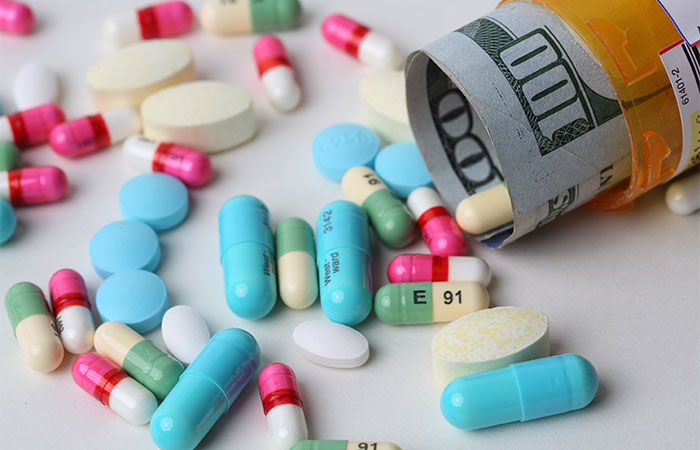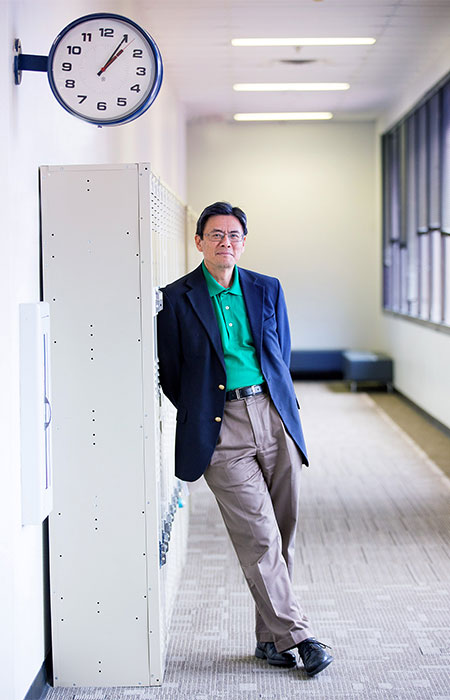Costly cures
By Jan Jarvis

Multiple myeloma sneaked up on Theresa M. Humphrey.
She was more tired than usual but still able to work two jobs. By the time she learned she had cancer, it already had caused bone damage in her skull, upper arms and hips.
“Cancer was eating me alive, and I didn’t know it,” said Humphrey, 64.
There is no cure for multiple myeloma, a cancer of plasma cells. But Humphrey is among a growing number of patients whose lives have been saved by modern medicine. She recently marked four years in remission.
Survival, however, came at a price: $10,200 a month for 21 pills of Revlimid.
“When the nurse told me the cost, I was speechless,” Humphrey said.
“`That’s cancer, honey,’ was all she said.”
New cancer drugs – 70 in the last five years – have given hope to thousands of patients – and driven historically high growth in the pharmaceutical industry. While biopharmaceutical research has revolutionized healthcare, its growth has come at a high cost.
In 2015, annual spending on specialty medicines increased 21.5 percent to $151 billion, according to the IMS Institute for Healthcare Informatics. Total spending on prescription medicines reached $425 billion. Most recently, a 500 percent increase in the cost of EpiPens sent consumers into a tailspin.
“You hear a lot of stories about how all the drug companies just want to do is make a lot of money, but I don’t know what’s true anymore,” Humphrey said. “All I know is I need this drug. And I hope and pray there is always a way I can get it.”
Getting a drug to market
High on the list of reasons why prices are so high: research and development.

It takes 10 to 15 years and nearly $2.6 billion to turn a molecule into the next biological blockbuster, according to the Tufts Center for the Study of Drug Development. Most drugs in development will never make it due to safety or lack of efficacy.
Over the past decade, for example, numerous drugs created to treat Alzheimer’s disease have failed in clinical trials, said Michael Jann, PharmD, Chairman of Pharmacotherapy at UNT Health Science Center’s College of Pharmacy. Overall, less than 12 percent of drugs entering clinical trials result in an approved medicine, according to Pharmaceutical Research & Manufacturers of America.
“When you look at everything involved, each clinical trial costs hundreds of millions of dollars,” Dr. Jann said.
Time also is not on the side of drug manufacturers due to patent expirations. Patents last 20 years, but the clock starts ticking in the lab when an application is filed. Much of that 20 years is spent in clinical trials and marketing.
“In this country a pharmaceutical company has only three to four years to recoup some of their money,” he said.
To reduce development costs, Big Pharma is turning to biotech start-ups, said Claude Longoria, Intellectual Property Management Director at UNTHSC. The early stages of drug development might be performed at an academic institution, but universities often don’t have the financial support to go further in the process. That’s where biotech businesses can step and take the drug through clinical trials before they’re bought by Big Pharma.
“They can raise private capital to advance the development of a drug to the point that the risk to Big Pharma is reduced,” he said. “Pharma is willing to pay a premium for that reduced risk.”
No limits
In a free market economy, companies can charge whatever price the market will bear. But it really doesn’t work that way when it comes to the pharmaceutical industry, said Ray D. Page, DO, PhD, an oncologist and Director of Research at the Center for Cancer and Blood Disorders in Fort Worth.
Although 17 percent of the U.S. Gross Domestic Product is health care, the majority of the industry does not operate under free market principles, he said.
“There’s no good price control,” Dr. Page said. “So you don’t get the dynamics of supply and demand.”
Adding to the problem is a 2003 law that forbids Medicare from negotiating drug entry prices. As new drugs hit the market, Medicare is forced to pay the asking price. Without government regulations to negotiate entry drug prices, costs continue to escalate, Dr. Page said.
That’s why chemotherapy costs $150,000 today compared to $10,000 a decade ago.
“The last thing we need in health care is more regulation, but it looks like it’s one of the few solutions,” Dr. Page said.
Competition, which should lead to lower prices, doesn’t really work when life-saving drugs are involved.
“It’s not like the airline industry where one company cuts the price of fares and all the others do the same thing,” Dr. Jann said. “Pharmaceutical companies do not follow that same principle.”
When the first Hepatitis C drug was developed, there was no competition. The pharmaceutical company was able to drive up the price to $84,000 for a 12-week course of the medication. The upside: In studies of Sovaldi, nearly 95 percent of patient were cured.
“Yes it is expensive, but it actually works. It cures Hepatitis C,” Dr. Jann said. “The same cannot be said of a lot of other drugs on the market.”
What’s old is new

In 1960, Thalidomide, a drug to prevent morning sickness, was removed from the market because of a possible link to birth defects.
Nearly five decades later, Thalidomide was combined with dexamethasone to create Revlimid, a second-generation drug that treats multiple myeloma and offers a more favorable toxicity profile. It is now the preferred treatment, despite costing $163,000 a year.
“Thalidomide found its niche, only it was for another use than originally intended,” Dr. Jann said.
Turning old drugs into new medical marvels is one way the pharmaceutical industry is able to reduce the risks that come with developing a drug from scratch. Another way is to tweak a formula and apply for a new patent.
“Drugs that cost pennies to make are put in a new delivery system such as an extended-release capsule or patch, and the drug makers can charge more,” Dr. Page said. “That’s how a drug ends up costing 100 times as much as it once did.”
Humphrey has been able to afford her medications, so far. Private insurance from her work in the retail industry – and assistance from charitable organization — have covered the hefty costs.
For that she is grateful.
“Had I not started treatment when I did, I would have been dead by the end of the year,” she said. “I’m a walking miracle.”
***
A version of this story first appeared in Fort Worth Business CEO magazine.





Social media